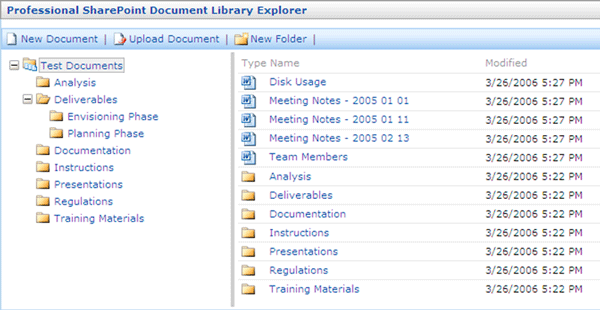10 serious mistakes companies make with SharePoint Part 1

There are many challenges to implementing SharePoint, both seen and unseen. As a result there are plenty of pitfalls and traps to fall into, and it is very challenging to pick just 10 mistakes. Poor governance, not having an intranet strategy, or not having an intranet committee are traditional mistakes, but hopefully there is more awareness about these issues now. Marcus Dervin, director of Sydney SharePoint/Office 365 consultancy WebVine. focusses on more specific issues that are are often overlooked, but can derail a SharePoint project team’s best intentions.
It would be great to hear what you consider to be in your top 10, please add a comment.
1.The all or nothing approach
Companies often endeavour to implement a full intranet site including Publishing sites, Team Sites, MySites, InfoPath forms, Business Intelligence and Document Management. An all or nothing approach. While these are great features, they can be overwhelming for end users when implemented all at once, not to mention the SharePoint team. And if they are not rolled out in a managed way, their impact falls short and you end up with lots of nothingness in your intranet.
For example, if someone has many deadlines and tasks to deliver, will they really go and update their MySite? Or even tag those documents correctly? Or even load those documents to the Team Site rather than just email them?
In order to create a successful SharePoint platform in your company, you need to take it step-by-step.
One approach we use in WebVine, is in addition to designing the intranet site, to create a number of small wins for departments also, for example setting up document management for the finance dept. Finance departments are very organised and methodical, and it’s easier to get metadata requirements from them, than from marketing for example. Then when you launch the intranet, showcase the library and have the finance team speak about the benefits of document management. You can do the same for with HR by building an Infopath form for them. And so on.
When people see the results, they become enthusiastic to follow suit, then start working with the remaining departments. You will have a much better chance of user engagement and success.
2.Implementing document management incorrectly
I have seen many SharePoint document libraries and I have rarely seen one that is done well. Often, using a share drive would offer similar benefits, aside from version control and the ability to send links instead of attachments.
If you are using SharePoint, then document libraries can offer tremendous benefits. However staff are not shown or trained on how to derive to most benefit from document libraries, and end up discarding them.
When you setup a library, the first thing to do is to run a workshop on how to design it. You need to capture the metadata that is applicable to the people using that library. For example, if you are setting up a library for the IT department, it will look different to the Legal department library. You also need to consider using content types and managed metadata in your libraries as these offer tremendous benefits.
With content types you can create a list of templates within a library, so if a user clicks ‘New’ they are presented with a list of predefines templates. If the templates are setup correctly eg a word document called ‘budget report’ then information entered in the word document can be captured as filterable metadata in the library. See below for a good and not so good example of a document library.

How not to setup a library – lots of folders, and no useful metadata

A better example of what a library should look like, no folders, filtered by metadata
3.Just using SharePoint as a CMS
Implement SharePoint as an intranet site takes a lot of work. Especially if engaging a design agency, managing multiple stakeholders and creating a decent site design. Not to mention creating content. Unfortunately, the resources used to create the intranet site end up being the same resources used to maintain and update the intranet. If resources are limited (intranet resources are usually thin), developing the SharePoint environment further tends not to happen. So you have an intranet that cost a million dollars in licensing, that could have been delivered much more cheaply on another CMS. If you are not offering any value other than SharePoint being a CMS, what’s the point in using SharePoint?
Team sites, project sites, document management, process improvements, collaboration, reporting and more all need to be on the strategy plan (just not all delivered at once of course). Otherwise it’s one expensively run website you have sitting there.
To get these projects off the ground, you’ll need a good understanding of what SharePoint can offer your company, and executive level support (see point 8). Ensure you get this support up front and create a SharePoint strategy that delivers decent ROI.
Then you will maximise your SharePoint investment.
4.Lack of SharePoint expertise in the organisation
Making a SharePoint project a success has many facets. Organisations rely completely on their staff to get projects over the line. But what happens when you don’t have enough knowledge in the project team? Quite possibly the team doesn’t even realise it.
For example, SharePoint is pretty easy to install. But if the administrator doesn’t understand the effect of version control, archiving, records management, and a whole lot more, then the site can come to a grinding halt within 12 months.
Understanding how the SharePoint environment will be used and planning for that up front is crucial.
Also, organisations tend to deploy collaboration features and expect people to use them. But soon after find empty MySites and discussion groups 1 thread deep. Having SharePoint technical understanding is not enough; you need a plan to ensure adoption in the organisation. Once people see empty pages, they tend not to come back.
Try to find lessons learnt from other companies, attend conferences, do your research, and get external assistance if you need to.
5.Missing out on key features completely
You don’t know what you don’t know. As a result, there are fabulous gems within SharePoint that are easy to implement, but are often missed. These features make a real difference to organisations, releasing people from repetitive tasks, so they can actually do productive and enjoyable work.
Custom lists, workflows, content types and forms are awesome and can transform the work culture of a company.
If you are still sending around lots of excel spreadsheets, then it’s likely you are missing out on at least one key feature. Custom Lists are a fantastic way of sharing information and getting rid of those excel documents. You can import an excel document and save it as a list to start with, then you can modify the list. For example setting a date field to default with today’s date. You can set alerts on the list, so if someone updates it, everyone on the alert is notified.
You can create different views of the list, so the manager (on the manager dashboard page if desired), sees the high level information only.
You can easily filter information on the list, for example I only want to see information related to NSW and status of urgent.
You can share information with other lists, for example if I have a column of projects and that appears in 2 different lists, I can create a look-up list to populate both lists.
The possibilities for more collaborative working between people and teams are endless – just using custom lists.
And there is plenty more that SharePoint can offer. So get under the hood, find out how to use these features, and ensure you utilise these in your organisation.
Next Week in Pt II ... The gap between IT and the business, leaving out search until the last minute, SharePoint sprawl and incorrectly setting up the environment, and more ...
WebVine are SharePoint experts, providing consulting and delivering projects for small-to-large companies in Australia. Email: info@webvine.com.au Phone +61 2 9554 6057
